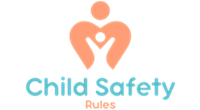As parents, one of our utmost priorities is ensuring the safety of our children, especially within the confines of our own home. While we may think that our homes are inherently safe environments, there are still many potential hazards that can pose a risk to our little ones. By taking certain precautions and making some simple changes, we can minimize the risks and create a safer living environment for our children.
One of the first steps in ensuring child safety at home is to regularly inspect and childproof the home. This includes securing cabinets and drawers with safety latches, covering electrical outlets, and installing safety gates at the top and bottom of stairs. Additionally, all furniture should be anchored to the wall to prevent tipping over, as this is a common cause of injury for young children.
It is also important to keep potentially dangerous items out of reach of children. This includes medications, cleaning supplies, and small objects that can pose a choking hazard. These items should be stored in locked cabinets or high shelves to prevent curious little hands from accessing them.
Another important aspect of child safety at home is fire safety. Every home should be equipped with smoke detectors on every floor, as well as carbon monoxide detectors near sleeping areas. It is also crucial to have a fire escape plan in place and to practice it regularly with your children. Make sure that children know how to dial 911 in case of an emergency and teach them basic first aid skills.
In the kitchen, it is important to never leave young children unattended while cooking and to keep hot pots and pans out of reach. It is also important to teach children about kitchen safety, such as not touching hot stoves or electrical appliances.
Outdoor safety is also a concern for parents. Make sure that outdoor play areas are safe and free from hazards such as sharp objects or poisonous plants. It is also important to supervise children while they are playing outside and to teach them about road safety.
Finally, communication is key when it comes to child safety at home. Talk to your children about potential hazards and how to avoid them. Encourage them to ask questions and seek help if they are unsure about something. By creating an open dialogue, you can empower your children to make safe choices and prevent accidents from happening.
In conclusion, child safety at home is a top priority for parents. By taking some simple precautions and making necessary changes to your living environment, you can minimize the risks and create a safe and secure home for your children. Remember that prevention is key, and a little effort goes a long way in ensuring the well-being of your little ones.









